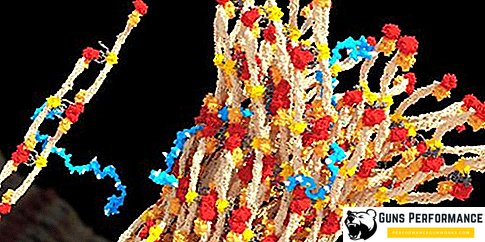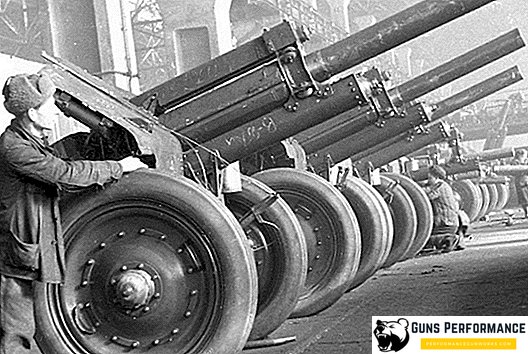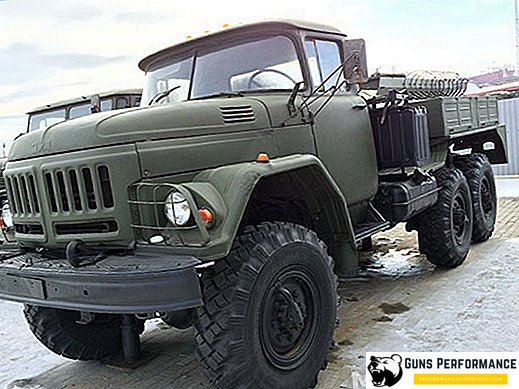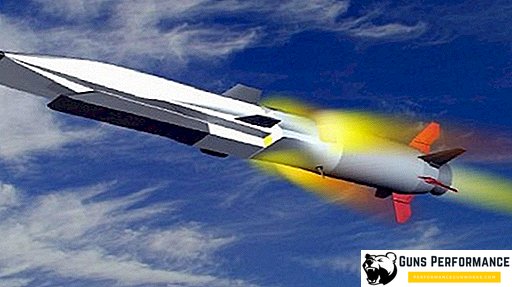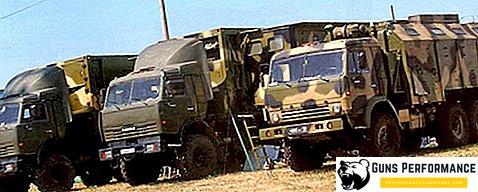The role of aviation in armed conflicts is increasing every year. The primary objective of combat aircraft are enemy troops, not only in places of permanent deployment or on their lines, but also on the march. This problem arose acutely during the Second World War, it is still relevant today. It was partially resolved only in the 70s of the last century, when the level of development of rocket technology made it possible to create portable anti-aircraft missile systems (MANPADS), effective against enemy aircraft and helicopters at low altitudes.
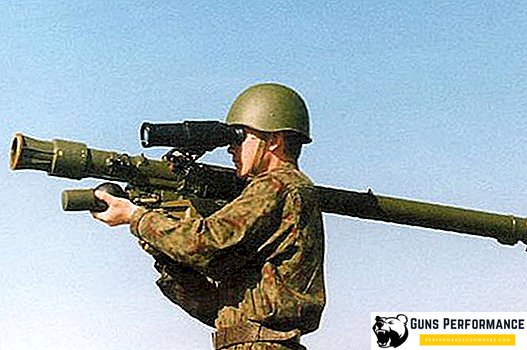
There are not many countries in the world capable of producing MANPADS. At the moment, the leaders in this field are Russia, the United States, France and the United Kingdom. One of the most famous portable missile systems in the world is the Igla MANPAD 9K38, the development and production of which began back in the USSR. MANPADS 9K38 "Needle" is in service with the Russian army, in addition, this complex is actively supplied (and supplied) for export, they are armed with several dozen armies in the world.
The Igla missile system possesses excellent characteristics; it can not only confidently hit enemy aircraft and helicopters, but also counteract interference and recognize false targets. The development of this weapon is engaged in Kolomna mechanical engineering design bureau.
History of creation
Aviation became a formidable force already during World War II. German dive bombers "piece" was a real curse for the Red Army, and the Soviet Il-2 attack aircraft instilled real horror in German soldiers. An effective remedy against air strikes was never invented. The anti-aircraft missile systems that appeared after the war did not solve this problem, since they were designed to destroy enemy aircraft at high altitudes. The situation was even more aggravated by the appearance of attack helicopters, which became ideal attack aircraft.

In the 1960s, at about the same time, the development of a mobile anti-aircraft missile system began in the United States and the USSR, which could be used to arm a separate infantryman. The shooting should have been carried out with a shoulder or a small tripod. The rocket for the new air defense missile system was to be guided by the air target itself and confidently destroy it.
In the USSR, the results of these works were the appearance of the Strela MANPADS, and in the USA, the portable FIM-43 Redeye missile system. These complexes belong to the first generation of this weapon. It was very effective, was used in a variety of conflicts and confidently shot down enemy aircraft. For example, with the help of the Soviet Strela-2 MANPADS, Viet Cong shot down 205 American aircraft.

Soviet Strezha MANPADS received a baptism of fire in 1969, with their help 6 Israeli Phantoms were shot down in one day. American MANPADS created a serious problem for the Soviet troops in Afghanistan, especially when the advanced mundane second-generation Stinger complexes began to be delivered to the Afghan mujahideen. During the years of the Afghan war, the Afghan guerrillas were able to hit Soviet planes and helicopters 226 times using various types of MANPADS. 167 aircraft were shot down.
These weapons provided good air defense for small military units, in some countries in Asia and Africa they are still in service. However, these complexes had a number of serious flaws: they could not attack the enemy on a collision course, their range of defeat was unsatisfactory, the sensitivity of the fuse and the power of the warhead also did not suit the military too.

All of the above disadvantages were taken into account by designers when developing the next-generation MANPADS, which include the Igla-1 complex.
The development of 9K38 "Needle" MANPADS began in 1971, after the relevant decree of the Soviet government. The designers were tasked with improving the whole range of characteristics of the missile complex. KBM MOP under the leadership of S. P. Invincible became the lead developer of Needles, the LOMO specialists created the homing head for the rocket. A number of other enterprises of the USSR participated in this project.
The military set the following tasks for the designers:
- increasing the security of the infrared homing head from traps that shoot enemy planes and helicopters;
- increase the probability of hitting an air target in the case of a direct hit by a guided missile;
- an increase in the target's distance and the possibility of firing on a collision course;
- clear identification of the aircraft or helicopter to exclude the possibility of accidentally firing at one’s own;
- the possibility of pre-targeting the enemy’s approaching air targets with air defense command posts at the tactical level.
The task was very difficult to implement, so the work on the new complex was very long. Tests of MANPADS were to begin in 1973, but they only started in 1980. The 9M39 missile, equipped with a homing head with two photodetectors, became the basis of the 9K38 Igla. They allowed the rocket to confidently distinguish the enemy’s aircraft or helicopter from false targets-traps.
Due to the significant postponement of the creation of the Igla anti-aircraft complex, in 1978 it was decided to start developing another MANPADS, the Igla-1, which would differ from the base complex with greater simplicity and lower cost. They were to be taken into service in parallel, accelerating and cheapening the process of completing the USSR Armed Forces.
Also in 1978, work on the creation of a new missile for Igla-1 MANPADS was completed, only the homing head was not ready. It was decided to install the Strela-3 missile from this Strength-3 missile and to get a new portable anti-aircraft missile system as soon as possible. In 1980, began testing the "Needles-1", and a year later it was adopted for service.
A portable anti-aircraft missile system 9K38 "Needle" was adopted in 1983.

A more perfect modification of this weapon is the Igla-S, the state tests of which ended in 2001, and a year later it was adopted by the Russian army. There are a few more modifications:
- "Needle-in". This MANPADS is designed to arm helicopters and ground combat vehicles. There is a block that allows simultaneous launch of two missiles at once.
- "Needle-D." This modification is designed for parts of the Airborne Forces and has a collapsible launch tube.
- "Needle-N". The missile of this complex has a warhead with much more power, which significantly increases the probability of destroying an air target.
There are several more modifications created by Ukrainian developers. They are distinguished by a more advanced homing head, which has greater accuracy and noise immunity.
Description of construction
The most advanced modification of the Igla complex is Igla-S, this MANPADS has the highest tactical and technical characteristics. It was created as a result of deep modernization of 9L38 Igla MANPADS. This missile system is able to counteract not only enemy aircraft and helicopters, but also to shoot down its drones and cruise missiles. The probability of hitting targets is 0.8-0.9.
Experts believe that the probability of hitting an F-16 type air target in the forward hemisphere is approximately 50%, taking into account the use by the adversary of all the available active and passive interference and its intensive maneuvering.
The 9K338 Igla-S complex consists of a 9M342 rocket in a launch tube and a trigger mechanism, as well as a Mowgli-2 night vision device. The complex also includes the means of its maintenance: a mobile control point and means of control and test equipment.
Compared with the base model, the Igla-S MANPADS has a greater range of damage (it has increased to 6 km) and an increased power of the warhead (both in terms of explosives and the number of fragments). Despite this, the weight of the missile complex remained almost unchanged. In addition, the rocket has become even more robust, which allows it to hit even well-protected targets.
The maximum altitude of the air target is 3.5 km. Its speed can reach 340 m / s. The weight of the complex is 19 kg.
The homing head of the GOS 9E435 rocket has two channels for receiving incoming signals, which allows it to conduct effective selection and separate false targets from real ones. When approaching the target, the rocket deviates from the point of guidance (that is, from the nozzle) and hits the central part of the aircraft, which is much more vulnerable. In terms of vibration and shock, the 9M342 missile far exceeds its predecessors.
In addition, for the first time, a rocket-mounted fuse is installed in the rocket, which provides for a blast at a short distance from the target, causing it more serious damage. The issue of interaction between contact and contactless fuse was also resolved. Moreover, in the case of contact blasting, the explosion does not occur immediately, but after a certain time, after the penetration of the missile warhead into the skin of the targeted aircraft. This greatly increases the efficiency of the blast.
The fuel used in the Igla-S MANPADS rocket possesses high detonation properties, which further increases the combat effectiveness of the rocket, especially when used on a collision course.
Immediately after the launch of the rocket, the powder engine starts to work, which directs the missile defense to the lead point. All this happens without any human participation.
The installation of a night-vision device on the Igla-S MANPADS, which makes it possible to use this weapon at any time of the day, is very important. Modern aviation is increasingly making precisely nighttime raids, therefore such a device significantly increases the capabilities of the anti-aircraft complex. Using the Mowgli NVD, the shooter can easily aim and track the target.

When we talk about Igla MANPADS, we mean a whole family of portable missile systems. Despite the fact that the modification of the "C" is the most modern and advanced, in service of the army are thousands of complexes of earlier versions, released in the Soviet period.
The dimensions of the Igla-S modification allow for the firing of rockets of old modifications. Moreover, the 9M342 rocket can be used by the Igla and Igla-1 complexes. Fixing the Mowgli night vision device allows you to install this device on the complexes of earlier versions.
The use of the Igla-S modification does not require serious retraining from servicemen who had previously dealt with the Igla or the Igla-1.
MANPADS "Igla" is equipped with a reliable identification of "friend or foe", which guarantees blocking the launch of a rocket on its own aircraft or helicopters.
The complex is able to work effectively in any conditions: at extremely high and low temperatures, in conditions of high humidity, with heavy precipitation and even after immersion in water (0.5 meter for 30 minutes). The missile complex in the package is not afraid of falling from a height of two meters, strong vibration and numerous mechanical shocks.

To ensure the shooting of two anti-aircraft missiles at once, the Dzhigit launcher was created. It is equipped with a system of external preliminary determination ("friend or foe"), means of self-diagnosis and maintenance. The shooter is in the rotating seat, to the left and to the right of him are the launch tubes of rockets. Targeting is done manually. Salvo shooting increases the probability of hitting an air target by 1.5 times.
Combat use of MANPADS "Igla"
This portable missile system was first used during the Civil War in El Salvador. The rebels, supported by the USSR, managed to shoot down one attack aircraft, the Cessna A-37 and the AS-47 aircraft. Nicaraguan rebels shot down DC-6 with the help of the “Needle”.
The first large-scale conflict in which the "Needles" were used was the Gulf War. In 1991, with the help of this MANPADS, four “Harriers” were shot down.
During the war with Bosnia, the Serbs shot down the "Needle" French fighter "Mirage 2000".
During the war in Nagorno-Karabakh, Armenians destroyed two Azerbaijani MiG-21 aircraft with the help of the “Needle”.
Chechen rebels shot down five or six Russian helicopters using various modifications of Igla MANPADS. They include a helicopter with officers of the General Staff and a helicopter in which Deputy Minister Rudchenko and other high-ranking officials flew, as well as the Mi-26 with 113 servicemen on board. Only in 2005, the FSB succeeded in removing the latest anti-aircraft complex from the separatists.

With the help of this MANPADS several helicopters and planes of government forces were shot down during a civil conflict in Syria. Separatists in eastern Ukraine use Igla MANPADS against government forces.
A little less than a month ago, the Kurds, using the Igla MANPADS, shot down a Turkish AH-1 Super Cobra helicopter.
Below are the tactical and technical characteristics (TTH) MANPADS "Igla-S".
| The affected area, m: - by distance - in height | 6000 10 - 3500 |
| Target speed, m / s: - towards - in pursuit | 400 320 |
| Weight in combat position, kg | 19 |
| Rocket caliber, mm | 72 |
| Rocket length, mm | 1635 |
| Rocket weight, kg | 11. 7 |
| Weight, kg | 2.5 |
| The transfer of MANPADS from the marching position to the combat, with | 13 |
| The time of the transfer of MANPADS from the combat position to the march, with | 30 |
| The onboard battery of the rocket, with | not less than 15 |
| Power supply replacement time, s | 15 |
| Terms of Use: - temperature, C - air humidity - immersion in water - depth - rise on height in untight cabin - falling on concrete (in packing) - overload (packaged) | from -40 to +50 |
| Area display air situation, km | 25.6x25.6 |
| Selection of PEP 1L10-2 targets for maintenance | auto |
| Power supply, V | 12, 24±3 |
| Application temperature range, С | from -50 to +50 |




